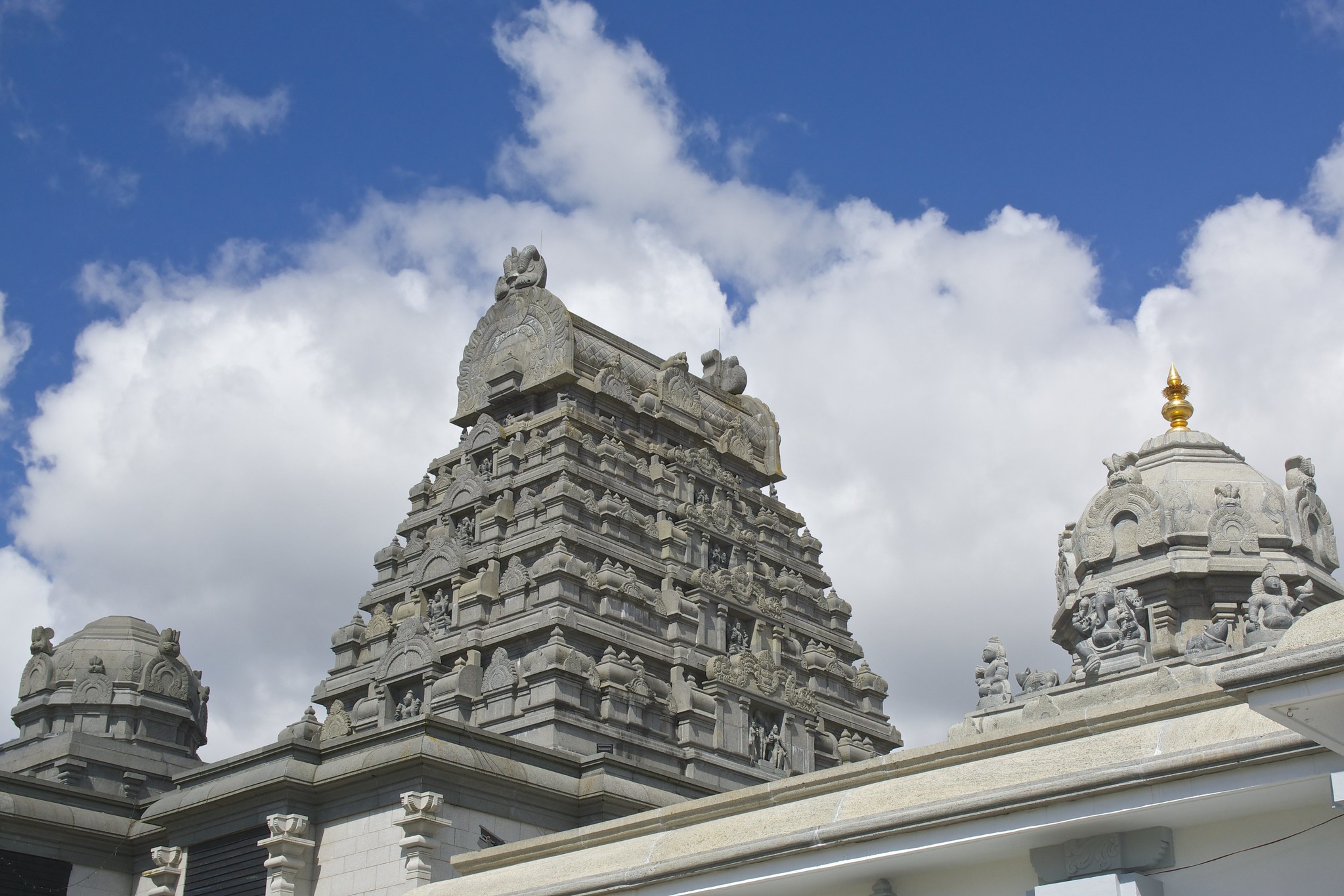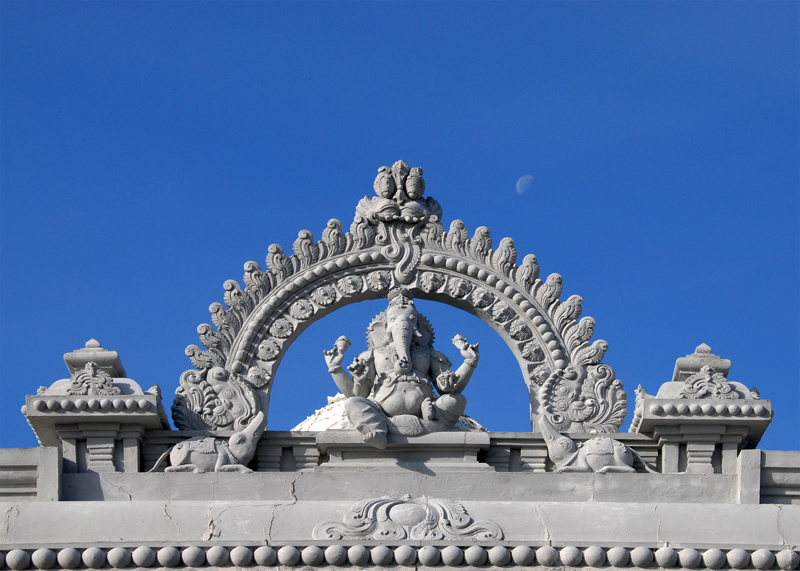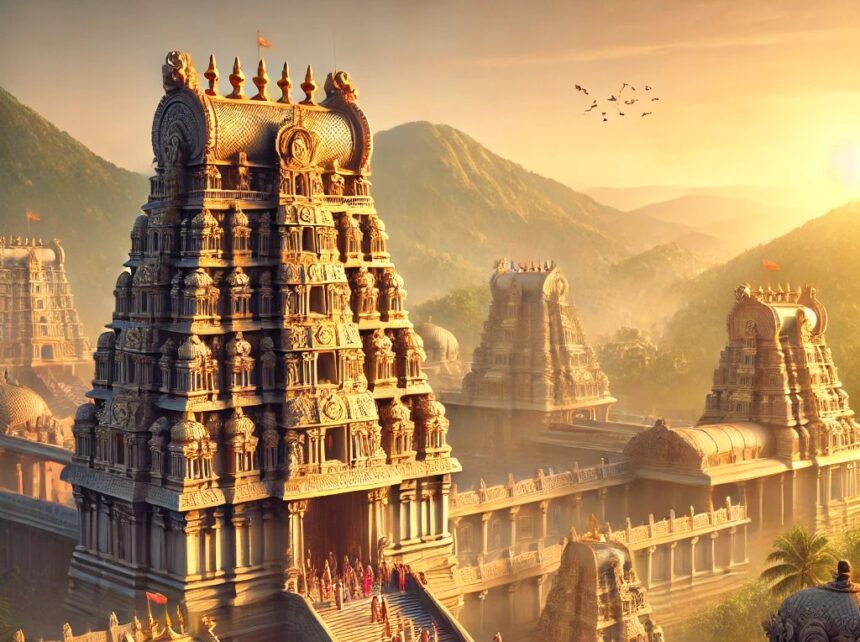Lord Venkateswara Balaji Temple: An Architectural Marvels-IV
Lord Venkateswara Balaji Temple Architectural Marvels
In the concluding installment of our series on the Lord Venkateswara Balaji Temple, we turn our focus to the temple’s architectural splendor, which stands as a testament to the ingenuity and devotion of its builders. Following our exploration of the temple’s global influence and spiritual significance, this blog will delve into the finer details of its architectural wonders. The Lord Venkateswara Balaji Temple not only embodies spiritual sanctity but also showcases a remarkable blend of artistry and engineering. This has captivated devotees and scholars alike. Join us as we take a closer look at the Dravidian architectural style and the symbolic elements that define this magnificent edifice.
To visit the older blogs click the links below
Lord Venkateswara: Eternal Beacon of Devotion and Architecture-I
Lord Venkateswara Temple: Spirituality and Culture-II
Lord Sri Venkateswara Temple: The Global Influence-III
Detailed Architectural Analysis
The Lord Venkateswara Balaji Temple exemplifies Dravidian architecture, renowned throughout southern India for its elaborate layouts and majestic structures. The temple showcases this style through its towering gopurams, intricate sculptures, and the purposeful design of its many halls, corridors, and sanctums. Together, these elements not only reflect the artistic dedication of their creators but also support the temple’s extensive spiritual practices.
Structural Design and Symbolism
The temple’s layout is symbolic of a celestial chariot, leading pilgrims on a transformative journey from the earthly realm to the divine. This architectural strategy enhances the spiritual connection for devotees, with each structural component meticulously designed to elevate their devotional experience.
Symbolism Behind Architectural Elements

- Gopuram: The temple’s prominent gopuram acts as a spiritual gateway, adorned with carvings that depict key narratives from Hindu lore, including tales of Lord Vishnu and Lord Venkateswara. More than just an entrance, it symbolizes a vertical passage to enlightenment, guiding the devotees’ gaze and spirit upward.
- Sanctum (Garbhagriha): Positioned beneath a golden dome, the sanctum houses the revered idol of Lord Venkateswara, considered a self-manifested incarnation of the divine. This sacred chamber is designed to concentrate spiritual energy, symbolizing the universe’s womb and fostering a rebirth of spirituality among those who enter.
- Mandapas: Serving as multifunctional spaces for meditation, ceremonies, and communal gatherings, the mandapas are adorned with detailed carvings that depict divine figures and stories. These elements not only decorate but also educate, infusing the temple’s atmosphere with lessons of virtue and divine philosophy.
Integration of Architecture and Spirituality
The architectural design of the Lord Venkateswara Balaji Temple seamlessly integrates physical artistry with spiritual teachings, making it a profound center for worship and divine education. The dedication to preserving this intricate architecture highlights the ancient artisans’ commitment to creating a space where spirituality and structural design coexist harmoniously, offering a timeless sanctuary for devotees.
Construction Techniques
The Lord Venkateswara Balaji Temple is not only a masterpiece of architecture but also a showcase of advanced construction techniques that have stood the test of time. These techniques, developed and perfected over centuries, continue to influence modern architecture today.
Ancient Construction Techniques:
The construction of the Lord Venkateswara Balaji Temple involved methods that combined both spiritual significance and practical durability. One of the most notable techniques is the interlocking system of stones, which ensured that the temple structure was stable and could withstand natural disasters like earthquakes. This technique involved carving each stone with such precision that when locked together, they formed a solid structure without the need for mortar. This method also allowed for thermal expansion and contraction, preventing cracks and damage under varying temperatures.
Materials Used in Construction
In the construction of the Lord Venkateswara Temple at Tirumala, the main material used was local granite, valued not only for its strength and durability but also for its aesthetic qualities that lend themselves to intricate carvings. This choice of granite showcases the sustainable practices of ancient times when materials were sourced locally and highlights the remarkable engineering skills of the artisans involved.
The granite blocks used in the temple were massive, and their transportation and sculpting represent significant feats of engineering. For instance, a typical large granite block used for foundational elements or major structural components of the temple might measure approximately 3 meters in length, 1 meter in width, and 1 meter in height. Given the size, such a block would weigh around 8,250 kilograms, equivalent to 8.25 metric tons. This substantial weight underscores the advanced capabilities and the sophisticated techniques employed by the artisans of that era to manage and manipulate such massive stones in the construction of the temple.
Artistic Decorations

Intricate Carvings and Sculptures
The temple walls, pillars, and ceilings are adorned with carvings that depict various episodes from Hindu Religious stories, particularly the incarnations and deeds of Lord Vishnu. These carvings are not mere decorations but serve as visual scriptures that educate and inspire the devotees. The scenes of Lord Venkateswara’s blessings, the exploits of his avatars, and the celestial beings that inhabit the spiritual universe are brought to life through these sculptures.
Skills of the Artisans
The artisans who crafted the temple decorations were masters of their craft, possessing deep knowledge of religious symbolism and expert sculpting skills. The precision with which they chiseled granite into lifelike figures and ornate motifs is nothing short of remarkable. The art forms depicted in the temple’s architecture, including dance poses and musical expressions, reflect the cultural richness of the period and highlight the interconnectedness of art, religion, and community life in Dravidian culture.
These artistic decorations not only beautify the temple but also serve as a medium through which the stories and philosophies of ancient Hinduism are passed down through generations.
As we explore the architectural marvels of the Lord Venkateswara Balaji Temple, it becomes evident that every aspect of its construction—from the choice of materials and construction techniques to the intricate artistry of its decorations—was designed to create a space that is not only structurally impressive but also spiritually uplifting.
Innovations and Renovations
As we have explored the temple’s rich architectural heritage, it is equally important to note that the Lord Venkateswara Balaji Temple has also embraced modern innovations and renovations to maintain its architectural integrity and accommodate the ever-increasing number of devotees.
Modern Innovations
To ensure the preservation of its sanctity and structural integrity, the temple has incorporated modern engineering techniques into its maintenance and renovation practices. One significant innovation has been the introduction of water-proofing technologies to protect the temple’s intricate carvings from weathering and environmental damage. Additionally, the lighting within the temple has been upgraded to energy-efficient LED systems, which not only enhance the visibility of the temple’s architectural details but also reduce its energy consumption.
Seismic Retrofitting
Given the temple’s location in a region prone to seismic activity, modern seismic retrofitting techniques have been applied to enhance the structural resilience of the ancient edifice without compromising its original aesthetics. This involves reinforcing the temple’s foundations and key structural elements with modern materials that are sympathetic to the original design.
Challenges in Modernization
Balancing modernization with the preservation of traditional aesthetics poses a significant challenge. The use of contemporary materials and techniques must be carefully managed to ensure they do not detract from the temple’s historical and spiritual character. For instance, any additions or alterations must adhere to the traditional Dravidian architectural style, using materials and designs that blend seamlessly with the old structures.
Recapping of Scientific and Technological Mastery in the Temple
Having examined the temple’s architectural marvels, let us recap the scientific and technological mastery that underlies its construction, as previously explored in our series. Here’s a brief recap of the key scientific and technological aspects previously explored, emphasizing the ancient and modern innovations that contribute to the temple’s grandeur.
Ancient Construction Techniques
We discussed the ancient construction techniques that showcase the temple’s architectural genius. Notably, the interlocking stone system which has provided the structure with stability and earthquake resistance over centuries. This method, devoid of mortar, highlights the precision with which artisans carved each stone, allowing for thermal expansion and contraction, and showcasing an advanced understanding of material engineering.
Materials Used in Construction
The choice of materials used in the temple’s construction, particularly the use of local granite, played a crucial role in its architectural design and durability. These massive stones, some weighing up to 8.25 metric tons, were transported and sculpted using sophisticated techniques, underscoring the artisans’ profound engineering capabilities during ancient times.
Innovations in Acoustic and Cooling Technologies
urthermore, the temple’s architectural design incorporates specific acoustic features, such as the ‘Naadaswaram’ hall, which not only showcase the ancient knowledge of sound engineering but also contribute to the temple’s overall architectural splendor. Additionally, its natural ventilation system, a sustainable cooling method, leverages wind flow to maintain comfortable temperatures, showcasing an ecological approach long before modern sustainability standards.
These elements from the previous blog highlight how the Lord Venkateswara Balaji Temple stands as a testament not only to ancient artistry and devotion but also to enduring scientific wisdom and innovation. This rich blend of history, spirituality, and science makes the temple a fascinating subject for devotees and scholars alike, bridging the past with the present in its ongoing journey through time.
Reflections on Lord Venkateswara Balaji Temple’s architectural
In conclusion, as we reflect on the Lord Venkateswara Balaji Temple’s architectural marvels, its significance becomes monumental, encapsulating a profound blend of divine inspiration, historical craftsmanship, and cultural heritage. Each element of the temple’s design, from its towering gopurams and expansive mandapas to the sacred sanctum sanctorum, is imbued with symbolism and purpose, designed to elevate the spiritual experience of all who visit.
This temple is not just a structure of stone and mortar; it is a living embodiment of Hindu spiritual and cultural values. The architecture of the Lord Venkateswara Balaji Temple plays a crucial role in its spiritual and cultural importance, creating a space that resonates with the divine and provides a tangible connection to the celestial. As we have explored the intricate designs, ancient construction techniques, and thoughtful modernizations, it becomes clear that the temple’s architecture is a testament to the enduring legacy of Lord Venkateswara’s divine presence on earth.
Through this series, we have journeyed through the multifaceted layers of the Lord Venkateswara Balaji Temple, gaining deeper insights into its spiritual essence, global impact, and architectural splendor. However, it’s essential to acknowledge that fully capturing the temple’s grandeur and significance is beyond any human ability to describe. The temple stands not just as a pinnacle of religious significance but also as a beacon of architectural brilliance and cultural legacy, continually inspiring devotion and awe in the hearts of millions.
Feature Image: Click here to view the image.
Visit our Youtube Channel by clicking here.
Click here to visit the related page on Medium.com
Follow us on our social median handles
Glossary of Terms
- Avatar: A divine incarnation or manifestation of a deity, particularly Lord Vishnu.
- Dravidian Architecture: A style of architecture prevalent in southern India, characterized by complex layouts, towering gopurams, and intricate sculptures.
- Garbhagriha: The sanctum sanctorum or innermost chamber of a Hindu temple, housing the deity’s idol.
- Gopuram: A gateway tower in a Hindu temple, often adorned with carvings and sculptures.
- Hindu Lore: The collective body of myths, legends, and stories from Hindu mythology.
- Interlocking Stone System: A construction technique used in ancient Indian architecture, where stones are carved to fit together without mortar.
- Lord Venkateswara: A manifestation of Lord Vishnu, revered as the presiding deity of the Tirumala temple.
- Lord Vishnu: The supreme deity in Vaishnavism, revered as the preserver of the universe.
- Mandapa: A pavilion or hall in a Hindu temple, used for various purposes such as meditation, ceremonies, and gatherings.
- Naadaswaram: A type of hall in a Hindu temple, known for its acoustic properties and used for musical performances.
- Seismic Retrofitting: The process of modifying an existing structure to make it more resistant to seismic activity.
- Tirumala: A sacred hill in Andhra Pradesh, India, where the Lord Venkateswara Balaji Temple is located.
- Vaishnavism: A major tradition within Hinduism, dedicated to the worship of Lord Vishnu.
Top 5 Searched #Tags Related to the Topic: #LordVenkateswaraBalajiTemple #DravidianArchitecture #TempleArtistry #SpiritualSanctuary #ArchitecturalMarvels



Leave a Reply